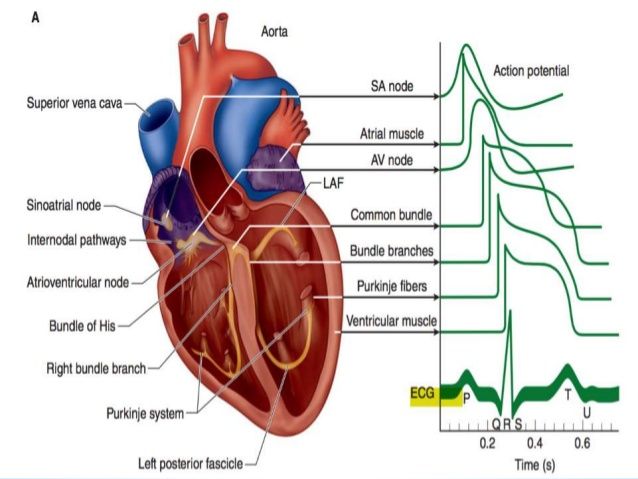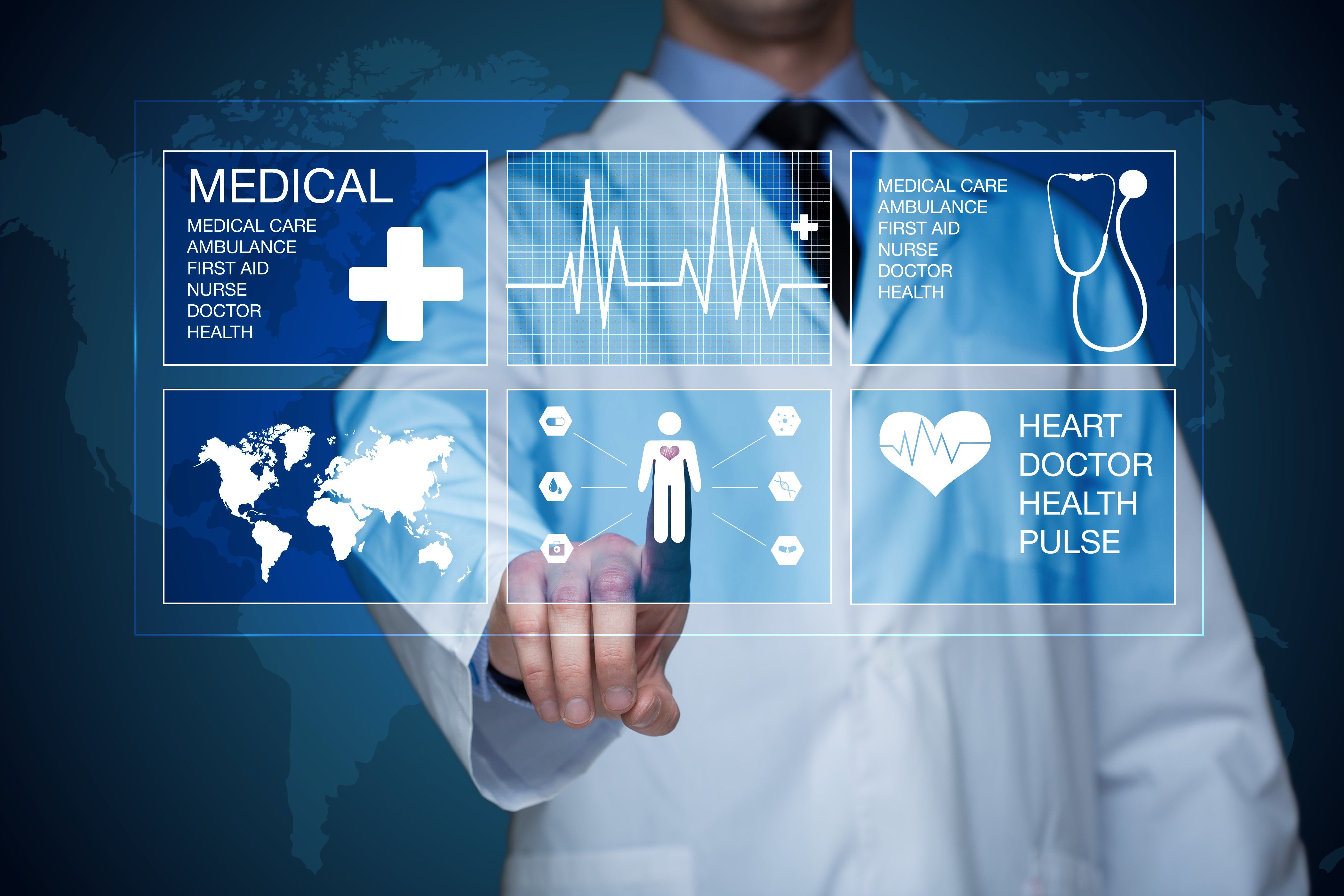Electrical heart doctor. Electrophysiologists: Specialized Heart Rhythm Experts – Everything You Need to Know
Who are electrophysiologists. What specialized training do they undergo. When should you see an electrophysiologist. How do they diagnose and treat heart rhythm disorders. What can you expect during an electrophysiology study. Why are electrophysiologists crucial for managing complex arrhythmias.
Understanding the Role of an Electrophysiologist in Cardiac Care
An electrophysiologist, also known as a cardiac electrophysiologist or cardiac EP, is a highly specialized cardiologist who focuses on diagnosing and treating irregular heart rhythms, or arrhythmias. These medical professionals play a crucial role in managing complex cardiac conditions that affect the heart’s electrical system.
Electrophysiologists are experts in examining and treating issues related to the heart’s electrical signals, which regulate heart rate and rhythm. They typically work in larger cardiac practices or hospitals, where they have access to advanced diagnostic tools and can perform specialized procedures.

Key Responsibilities of an Electrophysiologist
- Conducting specialized tests to evaluate heart rhythm disorders
- Diagnosing various types of arrhythmias
- Performing complex procedures to treat irregular heartbeats
- Prescribing medications to manage heart rhythm issues
- Recommending lifestyle changes to improve cardiac health
- Monitoring patients with implanted cardiac devices
Common Heart Rhythm Disorders Treated by Electrophysiologists
Electrophysiologists are equipped to diagnose and treat a wide range of heart rhythm disorders. Some of the most common conditions they encounter include:
- Bradycardia: A heartbeat that is too slow
- Tachycardia: A heartbeat that is too fast
- Atrial Fibrillation: A quivery, fluttery heartbeat
- Cardiac Arrest: The sudden stop of the heartbeat
- Other arrhythmias and heart disorders affecting the electrical system
Can electrophysiologists treat all types of heart problems? While electrophysiologists specialize in heart rhythm disorders, they may not be the primary care providers for all cardiac issues. They work in conjunction with general cardiologists and other specialists to provide comprehensive cardiac care.

The Extensive Training Path of an Electrophysiologist
Becoming an electrophysiologist requires a long and rigorous educational journey. These specialists undergo extensive training beyond that of a general cardiologist. The typical path to becoming an electrophysiologist includes:
- Completing a bachelor’s degree (4 years)
- Attending medical school (4 years)
- Completing a residency in internal medicine (3 years)
- Undergoing fellowship training in cardiovascular disease (3-5 years)
- Obtaining certification as a cardiologist
- Pursuing additional fellowship training in electrophysiology (2 years)
- Passing a specialized exam to become a certified electrophysiologist
How long does it take to become an electrophysiologist? The entire process typically takes 12-14 years after completing a bachelor’s degree, making it one of the most extensive training paths in medicine.
When to Consult an Electrophysiologist: Recognizing the Signs
Patients are usually referred to an electrophysiologist by their primary care physician or general cardiologist. Some common reasons for referral include:

- Experiencing abnormal heart rhythms
- Being considered for or undergoing cardiac ablation
- Suffering from syncope (sudden loss of consciousness)
- Having a risk of sudden cardiac death
- Preparing for heart surgery
- Potentially benefiting from a pacemaker or implantable cardiac defibrillator (ICD)
Is it possible to make a direct appointment with an electrophysiologist? Generally, electrophysiologists see patients through referrals rather than direct appointments. However, if you’re experiencing symptoms of a heart rhythm disorder, it’s essential to consult your primary care doctor or cardiologist, who can determine if a referral is necessary.
The Electrophysiology Study: A Closer Look at Diagnostic Procedures
One of the primary diagnostic tools used by electrophysiologists is the electrophysiology study (EPS). This test provides detailed information about the heart’s electrical activity and helps locate the sources of arrhythmias.
The EPS Procedure
- The doctor inserts a thin tube called an electrode catheter into a blood vessel leading to the heart, usually through the groin, arm, or neck.
- Electrical signals are sent to the heart, and its activity is recorded.
- The procedure typically takes 1-4 hours and is conducted in a specialized laboratory.
Preparing for an EPS
- Fast for 6-8 hours before the procedure
- Inform the doctor about any medications or supplements you’re taking
- Arrange for someone to drive you to and from the appointment
What happens after an electrophysiology study? Following the EPS, the electrophysiologist will review the results and discuss treatment recommendations with you. This may include medication adjustments, lifestyle changes, or more advanced interventions like ablation or device implantation.

Advanced Treatment Options Offered by Electrophysiologists
Electrophysiologists are trained in a variety of cutting-edge treatments for heart rhythm disorders. Some of the advanced procedures they may perform include:
Cardiac Ablation
This procedure involves creating small scars in the heart tissue to block erratic electrical signals. It can be highly effective in treating certain types of arrhythmias, such as atrial fibrillation or supraventricular tachycardia.
Device Implantation
Electrophysiologists are skilled in implanting devices such as pacemakers and implantable cardioverter-defibrillators (ICDs). These devices can help regulate heart rhythms and prevent life-threatening arrhythmias.
Lead Extraction
For patients with existing cardiac devices, electrophysiologists can perform lead extractions when necessary. This involves removing the wires (leads) that connect the device to the heart, typically due to infection or lead malfunction.
Cardioversion
This procedure uses electrical shocks to reset the heart’s rhythm. It’s often used to treat atrial fibrillation and other types of tachycardia.

Are all arrhythmia treatments invasive? While some treatments involve procedures, many heart rhythm disorders can be managed with medication and lifestyle changes. Electrophysiologists work with patients to determine the most appropriate treatment plan based on individual needs and conditions.
The Importance of Electrophysiologists in Managing Complex Arrhythmias
Electrophysiologists play a vital role in the care of patients with complex heart rhythm disorders. Their specialized knowledge and skills are crucial for:
- Accurate diagnosis of challenging arrhythmias
- Developing tailored treatment plans for individual patients
- Performing advanced procedures with high success rates
- Managing patients with multiple cardiac conditions
- Staying up-to-date with the latest advancements in cardiac rhythm management
How do electrophysiologists collaborate with other healthcare providers? Electrophysiologists often work as part of a multidisciplinary team, collaborating with general cardiologists, cardiac surgeons, and other specialists to provide comprehensive care for patients with complex cardiac issues.

Preparing for Your Visit to an Electrophysiologist
If you’ve been referred to an electrophysiologist, it’s natural to feel a bit anxious. Here are some steps to help you prepare for your appointment:
- Gather your medical records, including any previous cardiac tests or procedures
- Make a list of all medications and supplements you’re taking
- Write down any symptoms you’ve been experiencing, including their frequency and severity
- Prepare questions about your condition, potential treatments, and what to expect
- Consider bringing a family member or friend for support and to help remember important information
What should you expect during your first visit to an electrophysiologist? Your initial appointment will likely involve a thorough review of your medical history, a physical examination, and a discussion of your symptoms. The electrophysiologist may order additional tests or recommend a treatment plan based on their assessment.
The Future of Electrophysiology: Emerging Technologies and Treatments
The field of electrophysiology is rapidly evolving, with new technologies and treatments continuously being developed. Some exciting advancements include:

Mapping Technologies
Advanced 3D mapping systems are improving the accuracy and efficiency of cardiac ablation procedures, allowing for more precise treatment of complex arrhythmias.
Leadless Pacemakers
These tiny devices can be implanted directly into the heart, eliminating the need for traditional pacemaker leads and reducing potential complications.
Wearable Monitoring Devices
New wearable technologies are enabling long-term monitoring of heart rhythms, providing valuable data for diagnosis and treatment planning.
Gene Therapy
Researchers are exploring the potential of gene therapy to treat certain types of arrhythmias at their genetic roots.
How will these advancements impact patient care? As these technologies continue to develop, patients can expect more precise diagnoses, less invasive treatments, and improved long-term outcomes for heart rhythm disorders.
Electrophysiologists are at the forefront of cardiac care, specializing in the complex world of heart rhythm disorders. Their extensive training and expertise make them invaluable in diagnosing and treating conditions that affect the heart’s electrical system. From conducting advanced diagnostic tests to performing cutting-edge procedures, these specialists play a crucial role in improving the lives of patients with arrhythmias. As the field continues to evolve, electrophysiologists will remain essential in providing high-quality, specialized care for those with heart rhythm disorders.

What is an Electrophysiologist? What They Do, When to See One, and What to Expect
Written by WebMD Editorial Contributors
- What Does an Electrophysiologist Do?
- Education and Training
- Reasons to See an Electrophysiologist
- What to Expect at the Electrophysiologist
In the United States, heart disease is the leading cause of death for most racial and ethnic groups, contributing to about a fourth of US deaths every year. Every 40 seconds, someone in the US has a heart attack.
While a cardiologist is equipped to deal with most cardiovascular disease, sometimes the input of a cardiovascular subspecialist is required. Electrophysiology is one such subspecialty.
An electrophysiologist, also known as a cardiac electrophysiologist or cardiac EP, is a cardiologist who focuses on testing for and treating problems involving irregular heart rhythms, also known as arrhythmias. They examine your heart’s electrical system, which sends an electrical signal through your cells in order to regulate heart rate and rhythm.
Electrophysiologists generally work at a larger cardiac practice or hospital where they test for, diagnose, and treat abnormal heart rhythms. They are trained in the use of highly specialized tests, devices, and procedures in order to do so. They also may prescribe medication or make lifestyle recommendations.
An electrophysiologist may diagnose and treat conditions such as:
- Bradycardia. A heartbeat that is too slow.
- Tachycardia. A heartbeat that is too fast. There are three main types, according to where the problem originates in the heart.
- Atrial Fibrillation. A quivery, fluttery heartbeat.
- Cardiac Arrest. The sudden stop of your heartbeat.
- Other arrhythmias and heart disorders.
Electrophysiologists are cardiologists who have further training in the specialty of electrophysiology. After getting their bachelor’s degree, they go through a process that involves completing:
- An average of four years in medical school
- A three-year residency in internal medicine
- Three to five years additional training in cardiovascular disease fellowship(s)
- An exam to become certified as a cardiologist by the American Board of Internal Medicine or the Advisory Board for Osteopathic Specialists of the American Osteopathic Association
- Two years additional training in electrophysiology
- An exam to become certified as an electrophysiologist by the American Board of Internal Medicine
Your primary care doctor or another cardiologist may refer you to an electrophysiologist if you:
- Have an abnormal heart rhythm
- Are undergoing or being considered for cardiac ablation, a procedure that creates scar tissue in order to block erratic signals
- Experience syncope, i.
 e., a sudden loss of consciousness
e., a sudden loss of consciousness - Have a risk of sudden cardiac death
- Are undergoing heart surgery
- Might benefit from a pacemaker or implantable cardiac defibrillator (ICD)
Electrophysiologists are generally seen by referral and not through direct appointment.
Electrophysiology studies (EPS) test the electrical activity of your heart in order to locate sources of arrhythmia. The doctor will insert a thin tube called an electrode catheter into a blood vessel that leads to your heart. This insertion is usually in the groin but may be in the arm or neck. They will then send electrical signals to your heart and record its activity.
Electrophysiology studies usually take place in a specialized laboratory within a clinic or hospital. This room may be called the electrophysiology laboratory (or EP lab) or the catheterization laboratory (or cath lab). The test should last about 1-4 hours.
Before undergoing EPS, you should:
- Not eat or drink anything for 6-8 hours before
- Tell your doctor about any supplements or medications you take and follow their instructions
- Have someone drive you to your appointment and take you home
The doctor will then review your test results and make recommendations for your course of treatment.
What Is a Cardiac Electrophysiologist? What They Do, When to See One, and What to Expect
Written by WebMD Editorial Contributors
Medically Reviewed by Poonam Sachdev on December 13, 2022
- What Does a Cardiac Electrophysiologist Do?
- Education and Training
- Reasons to See a Cardiac Electrophysiologist
- What to Expect at the Cardiac Electrophysiologist
Your heart generally has a predictable, steady rhythm. But sometimes the rhythm can become irregular, a condition called an arrhythmia. Your heart might go too fast or too slow. You could feel like your heart is skipping a beat or adding extra beats. When that happens, your doctor may refer you to a specialist called a cardiac electrophysiologist.
A cardiac electrophysiologist is a specialist who understands heart rhythms and can diagnose and treat any heart rhythm problems.
A cardiac electrophysiologist uses testing to examine how your heart beats and what is causing any issues with its rhythm. Once your medical team knows the cause of your arrhythmia, your doctors can make a diagnosis and start a treatment plan for you.
Once your medical team knows the cause of your arrhythmia, your doctors can make a diagnosis and start a treatment plan for you.
A cardiac electrophysiologist is a cardiologist who has 2 years of extra training to learn about heart rhythms and how to diagnose problems with them. Training to become certified as a cardiac electrophysiologist involves:
- A 4-year medical school program
- A 3-year residency in internal medicine
- Board certification in internal medicine by the American Board of Internal Medicine
- A 3-year training program to specialize in cardiology, followed by board certification from the American Board of Internal Medicine in cardiovascular disease
- Another 2 years of training for certification in clinical cardiac electrophysiology from the American Board of Internal Medicine
Your primary care doctor may refer you to a cardiac electrophysiologist if you have noticed irregular heartbeats, such as a fluttering sensation, a racing heart, or feel like your heart skipping a beat.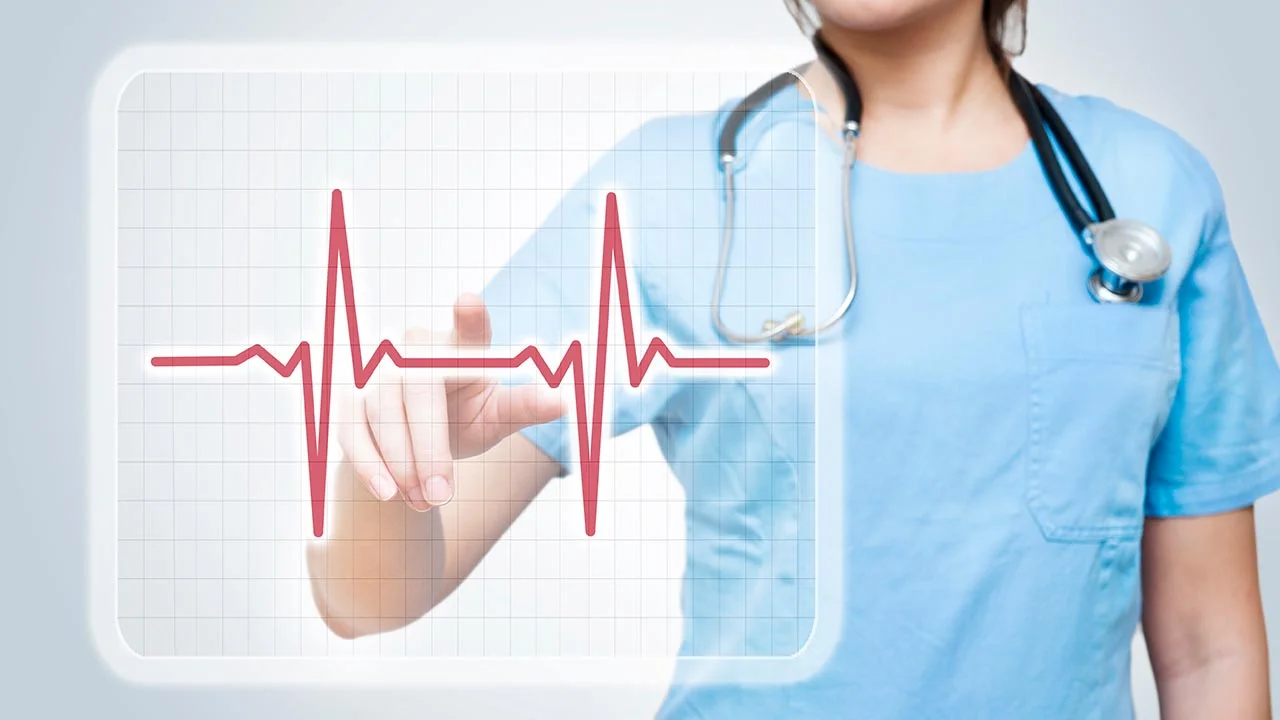
Less obvious symptoms can include fatigue, dizziness, fainting, or unexplained sweating. Even if you don’t feel a difference in your heartbeat, your doctor might notice an irregularity during a routine exam and refer you on for more testing.
There are several types of heart arrhythmia that a cardiac electrophysiologist can diagnose and treat. Some of the common types include:
- Atrial fibrillation. A fast rhythm in the upper chambers of the heart
- Bradycardia. A slow heartbeat
- Tachycardia. A fast heartbeat
- Ventricular tachycardia. A fast rhythm in the lower chamber of the heart
- Supraventricular tachycardia. A very fast heartbeat in the top chambers of the heart
- Long QT syndrome. A condition that can cause sudden arrhythmias
- Other arrhythmias.
 Heartbeat changes due to pregnancy, medication interactions, or other reasons
Heartbeat changes due to pregnancy, medication interactions, or other reasons
The first thing a cardiac electrophysiologist will do is specialized testing. Some tests are as simple as blood work, but you will probably need additional testing to look at your heartbeat pattern. Common tests include:
- Electrocardiogram. Also known as an EKG, the test uses electrodes on your chest to record your heartbeat.
- Echocardiogram. This is like a sonogram for your heart, so the doctor can watch it beating.
- Treadmill test. This allows doctors to monitor how your heart performs during exercise.
- Tilt-table test. This is to see how your heart responds to sudden changes of position.
- Portable heart monitor. This lets your doctor see how your heart beats as you go about your daily life.
 It’s useful if you have intermittent arrhythmia that doesn’t happen in the doctor’s office.
It’s useful if you have intermittent arrhythmia that doesn’t happen in the doctor’s office. - Electrophysiology study. In this test, the doctor inserts a catheter into a blood vessel to track your heart’s electrical activity. It is a more invasive procedure and might require special preparation. Speak with your doctor about what to expect before, during, and after this kind of test.
Depending on your diagnosis, you may have to take medications to control your heart rate. In some cases, you might need a procedure called an ablation, which uses radiofrequency energy to burn away a small amount of heart tissue and stabilize the rhythm. In other cases, you may require a pacemaker or implantable cardiac defibrillator.
You should discuss your treatment options with your doctor.
Top Picks
how to choose? Popular manufacturers of electrocardiographs and the best models.

- Choice of ECG device by number of channels
- Cardiographs with display
- What else to look for when choosing an electrocardiograph model?
- What cardiographs can be bought in Russia?
- Popular cardiograph manufacturers from Europe, USA and Japan
- Electrocardiographs from China
- Russian electrocardiographs
An electrocardiograph that records electrical impulses generated by the heart is an essential device for polyclinic specialists, resuscitation departments, ambulance teams, emergency medical care, and cardiology departments.
A modern cardiograph is a compact device that provides synchronous recording of bioelectric potentials from 1 to 12 leads.
ECG devices, depending on the manufacturer and installed software, can:

The electrocardiograph consists of several blocks. The input block includes:
- electrodes — 4 electrodes are applied to the limbs and from 1 to 6 electrodes, depending on the channel of the device, are applied to the chest;
- lead cables are responsible for transmitting signals from the electrodes to the device;
- lead switch.
Another important component of the cardiograph design is an amplifier of electrical signals from the surface of the human body, without which its further analysis is impossible. The recording device is responsible for recording the recorded signal on paper.
Types of electrocardiographs
By type, cardiographs differ in channel – 1-channel and multi-channel with 3, 6 or 12 channels. The cardiograph can be stationary or portable, with or without a display, with or without an interpretation function.
A modern type of electrocardiograph – a computer – a wireless ECG device that connects to a personal computer using Bluetooth technology and transfers the cardiogram data to it, providing not only electrical safety, but also freedom of movement for the patient.
Choosing an ECG device by the number of channels
When choosing an electrocardiograph, it is important to take into account its characteristics and, first of all, it is necessary to determine its channel.
The number of simultaneously operating channels determines the performance of the device. The electrocardiograph determines 12 channels, while a single-channel model records each of them sequentially, a three-channel ECG device – 3 at a time. Six- and twelve-channel models of cardiographs are the most productive: the first record from 6 channels, the second – from all at the same time.
Single-channel cardiographs are the simplest mobile ECG devices that are most often used in an emergency setting. They are distinguished by their compactness, light weight, minimum set of control elements, the ability to work both from the mains and from the battery, as well as low cost and limited functionality.
Three-channel ECG devices – provide three-channel output of diagnostic results. The press is carried out by means of the thermal printer automatically or manually. In addition to the examination data, you can add additional information about the patient: full name, age, pulse readings, etc. Many devices allow you to transfer the received data to a PC.
The press is carried out by means of the thermal printer automatically or manually. In addition to the examination data, you can add additional information about the patient: full name, age, pulse readings, etc. Many devices allow you to transfer the received data to a PC.
Three-channel electrocardiographs perform automatic calculations of key indicators, without requiring supervision by the staff. Some devices are equipped with a defibrillation function.
Six-channel electrocardiographs have a wider range of applications. This type of ECG machine is the most popular, and they are most often purchased by public and private clinics, hospitals, etc. They have a large amount of memory (about 1000 ECG), have a built-in hard drive with a capacity of 10 GB or more.
6-channel ECG machines have a more powerful battery, allowing staff to take 100-150 ECGs continuously. Such devices also feature faster printing speeds and allow you to use paper of different sizes.
Six-channel cardiographs display important information about the status of the device: the amount of free memory, battery level, notification of paper empty or electrodes disconnected, etc.
Twelve-channel electrocardiographs are used to register and measure the bioelectrical potentials of the heart in 12 leads. They are often used in surgery, orthopedics, internal medicine, and rehabilitation medicine.
12-channel ECGs are medical devices with maximum potential, providing sophisticated cardiac studies with simultaneous verification of many parameters. It is these cardiographs that will allow you to detect minimal deviations in the heart rhythm.
Twelve-channel cardiographs have an important feature – the maximum amount of memory, allowing the specialist to make records lasting more than an hour.
The device can be controlled via a PC, which makes it convenient to enter additional patient data, as well as easy transfer.
Such cardiographs provide monitoring of important patient indicators: pulse, arrhythmia, etc. The norm indicators are set for each patient. When errors are determined, an audible signal sounds.
The most modern, convenient and functional ECG devices today are computer cardiographs. Compact, easy to operate, compatible with a tablet or PC, computer cardiographs are used for stress test studies and electrocardiography at rest.
Compact, easy to operate, compatible with a tablet or PC, computer cardiographs are used for stress test studies and electrocardiography at rest.
Cardiographs with display
When choosing among the types of modern electrocardiographs, pay attention to ECG devices with a display. If the design of the device contains a screen, then working with it will be more comfortable and faster.
The ability to preview diagnostic results on the instrument monitor is a very convenient and requested feature. To do this, the cardiograph is equipped with a TFT or LCD display, which allows you to display the result on the monitor before receiving its paper version.
The presence of a display increases the cost of the cardiograph by 30-50%, but greatly facilitates the work of a specialist, allowing you to preview the diagnostic results on the screen and decide whether to print an ECG. This solution will save thermal paper in case the cardiogram was performed with interference and needs to be repeated.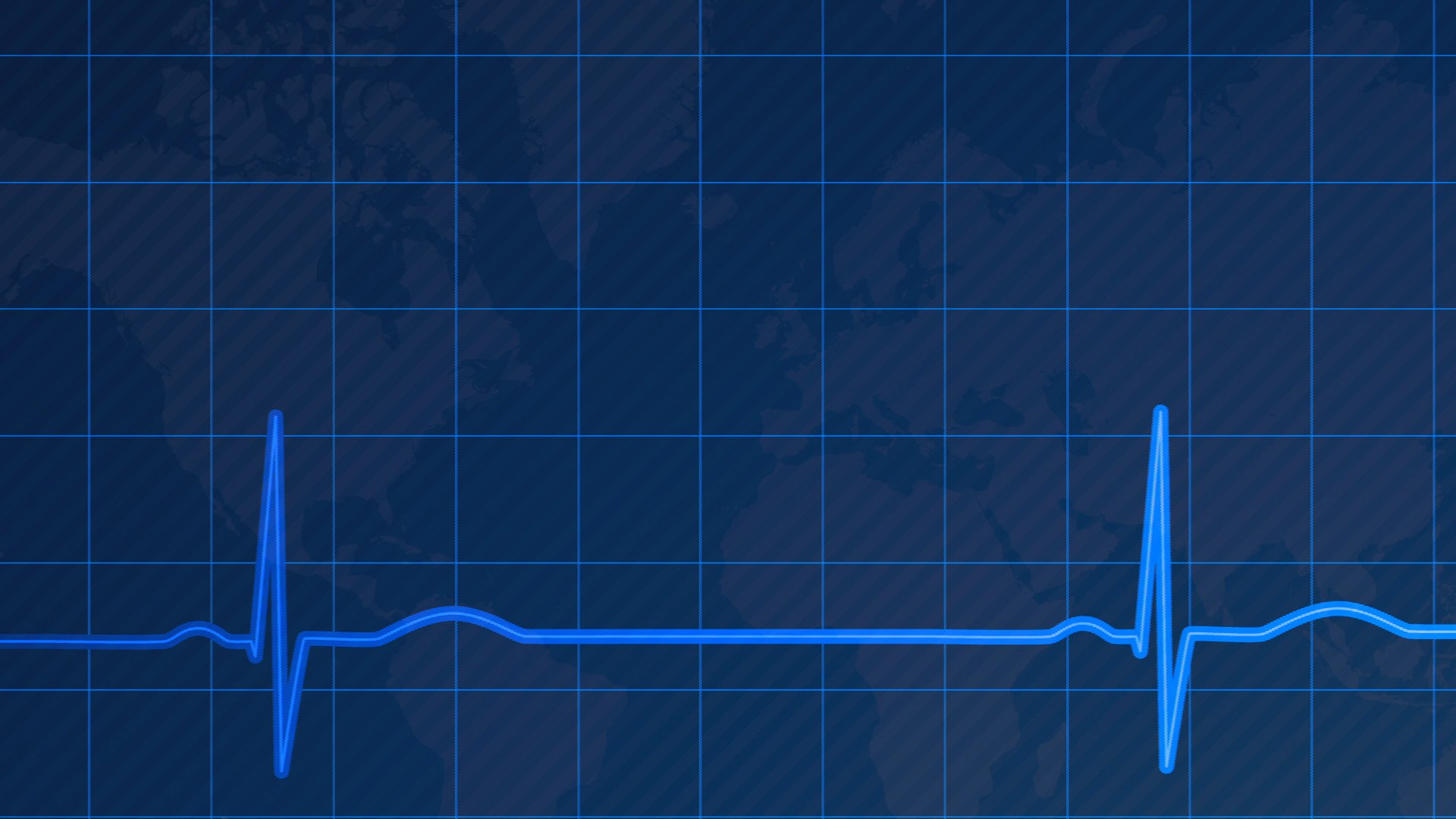
What else to look for when choosing an electrocardiograph model?
Electrocardiograph can be portable and landline . Stationary ones are heavy and can only be moved within the hospital, portable ones are convenient for mobile teams. When choosing a portable model, pay attention to the battery capacity.
Give preference to membrane keyboard . Unlike push-button, it is better protected from damage and dirt.
Additional options greatly simplify the work of the doctor and improve the quality of diagnosis. As additional features, the cardiograph can measure important indicators, such as the duration of complexes and phases; automatically interpret gross heart defects and display them on the screen, etc.
If you need to conduct stress tests and connect the device to a bicycle ergometer or treadmill, choose an electrocardiograph with specialized software.

PC connection via USB or Bluetooth allows you to view, store and transfer diagnostic results, keep a patient log, analyze the results, etc. Frequent breakdown of the cardiograph – failure of the connector cable. Having a Bluetooth connection will eliminate this problem.
Built-in memory capacity is another important indicator. The larger the internal memory of the cardiograph, the more ECG it can store in case the paper runs out.
Availability of required electrodes. Depending on the age of the patient, appropriate electrodes are used: adult, pediatric, neonatal. Make sure the cardiographer you choose has them and is easy to find and buy.
There are many functions and types of electrocardiographs. Looking for the right model
What cardiographs can be bought in Russia?
More than 20 domestic and foreign manufacturers offer their products on the modern market of electrocardiographs.
Some companies have 10 or more varieties of one-, three-, six- and twelve-channel instruments in their assortment. Such an abundance of offers significantly complicates the choice.
When buying a cardiograph, specialists usually rely on their personal experience, the opinions of colleagues, information sources, the manufacturer’s image, and affordability.
The Russian consumer has the opportunity to buy a cardiograph from leading European manufacturers:
- Schiller Cardiovit (Switzerland),
- Cardioline (Italy),
- Innomed Medical (Hungary),
- Esaote (Italy),
- GE Marquette Hellige (Germany).
In addition, cardiographs manufactured in Asia and Japan are widely represented on the Russian market:
- Fukuda Denshi (Japan),
- Edan (China),
- Nihon Kohden Corporation (Japan),
- Bionet (Korea),
- Trismed (Korea),
- Biocare (China).
Domestic manufacturers of electrocardiographs (Altonika, Valenta, Axion) also occupy their own niche, offering low-cost models of ECG devices.
Let’s dwell briefly on the most famous brands and offers from leading companies.
Popular cardiograph manufacturers from Europe, USA and Japan
One of the market leaders – Italian manufacturer Cardioline , which appeared on the market in 1950 and is well known to Russian consumers by the brand “Cardiette”.
Cardioline supplies its products to more than 50 countries worldwide. All types of electrocardiographs can be found in the Cardioline line: these 3, 6, 12-channel devices are safe, versatile and reliable, they embody the latest technological ideas and extensive upgrade options, they can be easily adapted to individual user needs.
Cardioline professional electrocardiographs are compact and easy to use. In the Cardioline line there are models for use in an ambulance, and for large cardio centers, and for departments of functional diagnostics.
These ECG machines have built-in Bluetooth for wireless communication with a PC.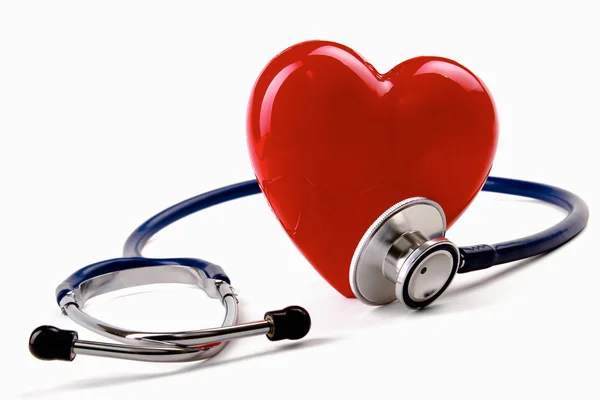 Each model can be purchased as standard or with a set of additional features.
Each model can be purchased as standard or with a set of additional features.
Most popular Cardioline electrocardiographs:
SCHILLER AG (Switzerland) , a world famous manufacturer of electrocardiographs and other cardio equipment and one of the leaders in Russian imports, produces both simple, practical and high-precision ECG devices and spirometers, as well as complex medical systems, network monitors and PC-based devices.
The range of SCHILLER cardiographs is extensive: from the simplest compact devices CARDIOVIT AT-1 to the innovative multifunctional diagnostic workstation Cardiovit CS-200, which combines all the features and advantages of previous generations of cardiographs with the latest computer achievements. This is a technique of the highest quality and corresponding price.
The most popular models of SCHILLER electrocardiographs:
Japanese company Fukuda Denshi Co. Ltd. has been operating in the global medical equipment market for more than 60 years and has its representative offices in many countries of the world, including Russia.
Ltd. has been operating in the global medical equipment market for more than 60 years and has its representative offices in many countries of the world, including Russia.
It takes the 3rd place in importing ECG equipment to our country, supplying its products made both in Japan and in its own factories in China. It is worth noting that devices made in China are about 20% cheaper than “native” Japanese ones, which is explained by the different cost of labor in one country and another.
The most popular electrocardiographs of the manufacturer Fukuda Denshi:
The Hungarian company Innomed Medical Inc is relatively young, since it was founded in 1989, but its electrocardiographs are known not only in Hungary, but throughout the world. The company’s goal is to provide customers with modern solutions at the best price and at low maintenance costs. The model of the HeartScreen 80G cardiograph became the winner in the nomination “best of the best” at the international design competition “RED DOT”. The company produces three-, six- and twelve-channel cardiographs. Despite the multifunctionality, the devices are easy to operate, reliable, provide high quality recording, and can be connected to a PC.
The company produces three-, six- and twelve-channel cardiographs. Despite the multifunctionality, the devices are easy to operate, reliable, provide high quality recording, and can be connected to a PC.
Esaote is one of the leading manufacturers of medical diagnostic systems. Esaote has established itself as Europe’s leading manufacturer of ultrasound products and is one of the leading manufacturers of specialized magnetic resonance imaging equipment. Its modular systems, functioning as stand-alone ECG systems or as part of more complex, high-performance networks, enable cardiologists to access and manage multiple cardiac diagnostic studies (including resting and exercise ECG, echocardiography, and Holter monitoring). In Russia, the most popular are portable models of cardiographs manufactured by Esaote.
The company Nihon Kohden Corporation has about the same popularity in the Russian market. It ranges from compact instruments with basic functions to innovative multi-mode instruments with a movable touch screen and data analysis capability. In the line of its cardiographs there are also specialized models designed for veterinary clinics.
In the line of its cardiographs there are also specialized models designed for veterinary clinics.
The GE Marquette Hellige cardiograph combines German Marquette Hellige tradition with leading General Electric technology. Under this brand, 3/6/12-channel resting and exercise ECG devices are produced, which are functional, easy to operate, and have an ideal ratio of the price of a cardiograph and its capabilities.
Electrocardiographs from China
China manufacturers quickly and massively fill the medical equipment market with their products.
In their desire to use the latest technological advances, the Chinese are practically not far behind the leading multinational companies. The main advantage of Chinese cardiographs is their low price, which in some cases is a determining factor in purchasing for medical institutions with a small budget.
For comparison, the average cost of a Chinese device is 700 US dollars, while the average “Japanese” or European-made device costs about 2000 dollars. According to statistics, the share of Chinese electrocardiographs imported into Russia is currently approaching 20%.
According to statistics, the share of Chinese electrocardiographs imported into Russia is currently approaching 20%.
It should be noted that the quality of Chinese appliances is steadily increasing. Accuracy of diagnostics, reliability, functionality, availability of modern options – these are the indicators by which Chinese electrocardiographs are in no way inferior to European or American ones.
company EDAN became one of the demanded Chinese manufacturers of cardiographs. Known to Russian specialists for more than 10 years, EDAN presented 3 models of 12-channel electrocardiographs:
Russian electrocardiographs
Domestic cardiographs are traditionally in demand both among Russian consumers and in the CIS countries. They are more expensive than Chinese devices, but cheaper than similar European ones. Consumers in Russian models are tempted by quick and cheap repairs, as well as affordability, compared to products from companies with big names. But is it worth saving?
But is it worth saving?
The most popular manufacturers of domestic ECG devices are Altonika and Axion – companies that use their own developments, providing the user with quick and inexpensive repairs, availability of spare parts.
The main disadvantage of all Russian electrocardiographs is a weak battery, which must be replaced at least once a year. In addition, with a discharged battery, these devices often fail, reducing the accuracy of diagnostics.
Many of the Russian cardiographs, among other things, do not tolerate shock and low temperatures.
According to the reviews of practitioners, the less electronic “bells and whistles” in the domestic device, the more stable and trouble-free its work.
Finding the right cardiograph for your needs and not overpaying for features you don’t need can be a daunting task. Our experienced managers are ready to assist you in choosing an electrocardiograph and will advise you on any issues related to this type of equipment.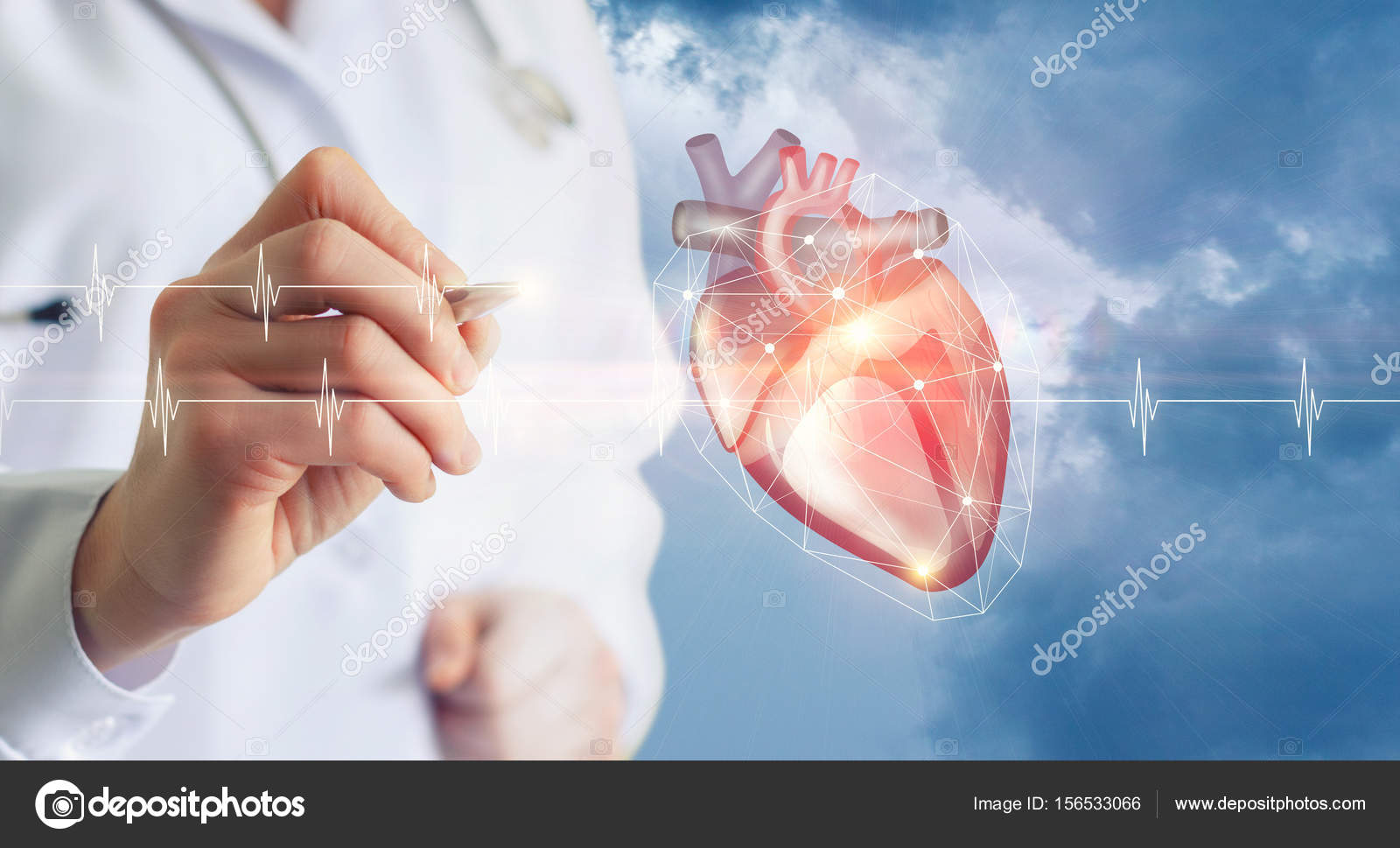
Electrocardiograph Monitor EK3T – 01 – “R-D”
Description
Key features:
- EC provides 6 or 12-lead patient ECG readings in the system of generally accepted standard leads and three-lead ECG according to Nab;
- the presence of a graphic LCD display allows you to view the ECG;
- automatic start of recording when an arrhythmia is detected, saves paper;
- the possibility of automatic ECG analysis eliminates the routine work of measuring the amplitude-time parameters of the ECG;
- possibility to use paper without millimeter grid;
- the ability to take an ECG with any number of chest leads;
- the ability to quickly switch the main modes of operation;
- registration of RR-gram allows to observe changes in the heart rhythm;
- ECG registration in the test mode allows you to visually compare the ECG before and after the test;
- nested menu system allows easy control of the instrument;
- the possibility of taking ECG from children and newborns (option).

Operating modes
EC provides the following ECG recording modes:
- registration of 12 leads simultaneously and their printing by 1,2 and 3 leads
- registration of 12 leads in the “probe mode” – multiple ECG registration with a specified interval for a specified time;
- registration of 12 leads in “arrhythmia mode” – automatic registration of ECG when arrhythmia or extrasystoles are detected in a patient;
- registration of the RR-gram within the specified time;
The electrocardiograph is powered by:
- 50 Hz AC mains, 198 to 242V;
- on-board network of an ambulance with voltage from 10 to 15V;
- internal power supply – battery;
The internal batteries are charged when the EC is powered from the AC mains or from the on-board network of a specially equipped ambulance.
Scope of delivery:
Main set:
- electrocardiographic unit with built-in thermal printer and charger,
- electrode cable,
- network cable,
- set of ECG electrodes,
- thermal paper roll,
- electrode gel,
- bag,
- instruction manual.


 e., a sudden loss of consciousness
e., a sudden loss of consciousness Heartbeat changes due to pregnancy, medication interactions, or other reasons
Heartbeat changes due to pregnancy, medication interactions, or other reasons It’s useful if you have intermittent arrhythmia that doesn’t happen in the doctor’s office.
It’s useful if you have intermittent arrhythmia that doesn’t happen in the doctor’s office.
